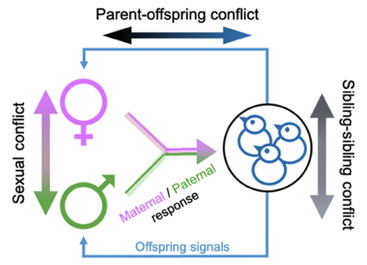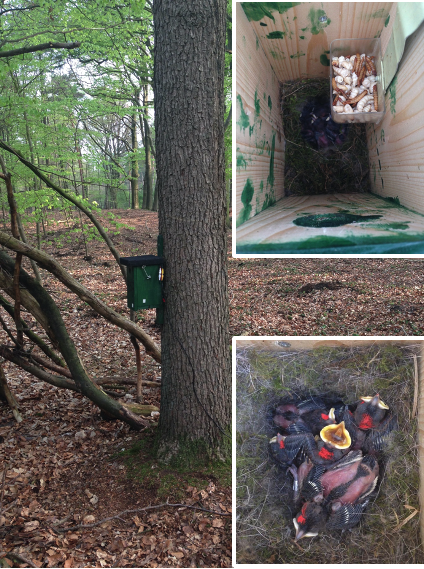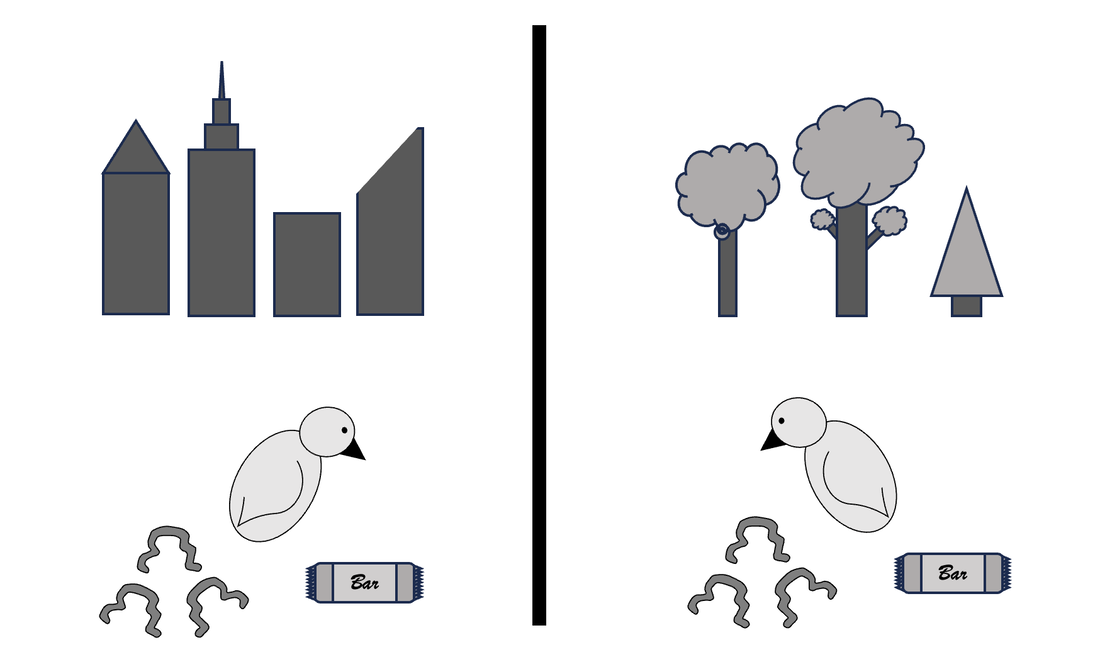Social evolution

Animals behave. They behave when foraging for food, when defending their territory, when tipping their Uber driver. Social behavior, interactions between multiple individuals, affects conspecifics’ fitness, either positively--cooperation—or negatively--competition. If individuals differ in their optimal outcomes for social interactions, they experience an evolutionary conflict. For example, in species with biparental care, both sexes influence how much care offspring receive, but may disagree over how much each should invest: males might prefer females do more of the hard work of raising offspring, while females prefer the opposite. Such conflicts are ubiquitous in nature. The evolutionary result of conflict depends not just on the nature and severity of the conflict, but also on the proximate and ultimate causes of behavior. The Caro Lab studies this through the lens of how parents divide resources amongst their offspring, and how offspring attempt to influence that division through signaling (begging). This system has multiple axes of conflict (parent-offspring, sibling-sibling, and parent-parent), which are influenced by both environmental and social factors. This allows us to explore how different sources and severities of conflict shape communication. We employ a variety of methods, including meta-analyses, field work, and modeling.
Behavioral neuroscience
The field of neuroscience has provided incredible insights into the neural and cognitive process underlying thought and decisions. What little we do know about decision-making processes comes from laboratory studies, but these studies may not adequately reflect conditions in the real world. We also know relatively little about how individuals make complex choices, rather than simple AB choices differing on only one tightly controlled parameter at a time. We leverage parental feeding decisions made by wild birds to non-invasively explore decision-making with real-world complexity and real-world consequences. Our current focus is on speed-accuracy tradeoffs, multimodal evidence, and confidence.
Urban behavioral ecology
|
Animals are living and behaving in the Anthropocene -- in other words, it's a humans' world, animals are just living in it. From urbanization to a loss of biodiversity to climate change to agriculture to pollution to the introduction of invasive species, human activities have drastically reshaped the environment and thus the selective pressures facing animals. Our lab strives to understand how human-induced changes impact animal behavior, physiology and ecology. We are also interested in researching practical ways to mitigate the deleterious effects of humans. Our current focus is on foraging preferences in birds in suburban or sanctuary settings.
Much of this work is being done in partnership with the Garden City Bird Sanctuary. |



